CITY 2000: A Moment of Chicago History Frozen in Place
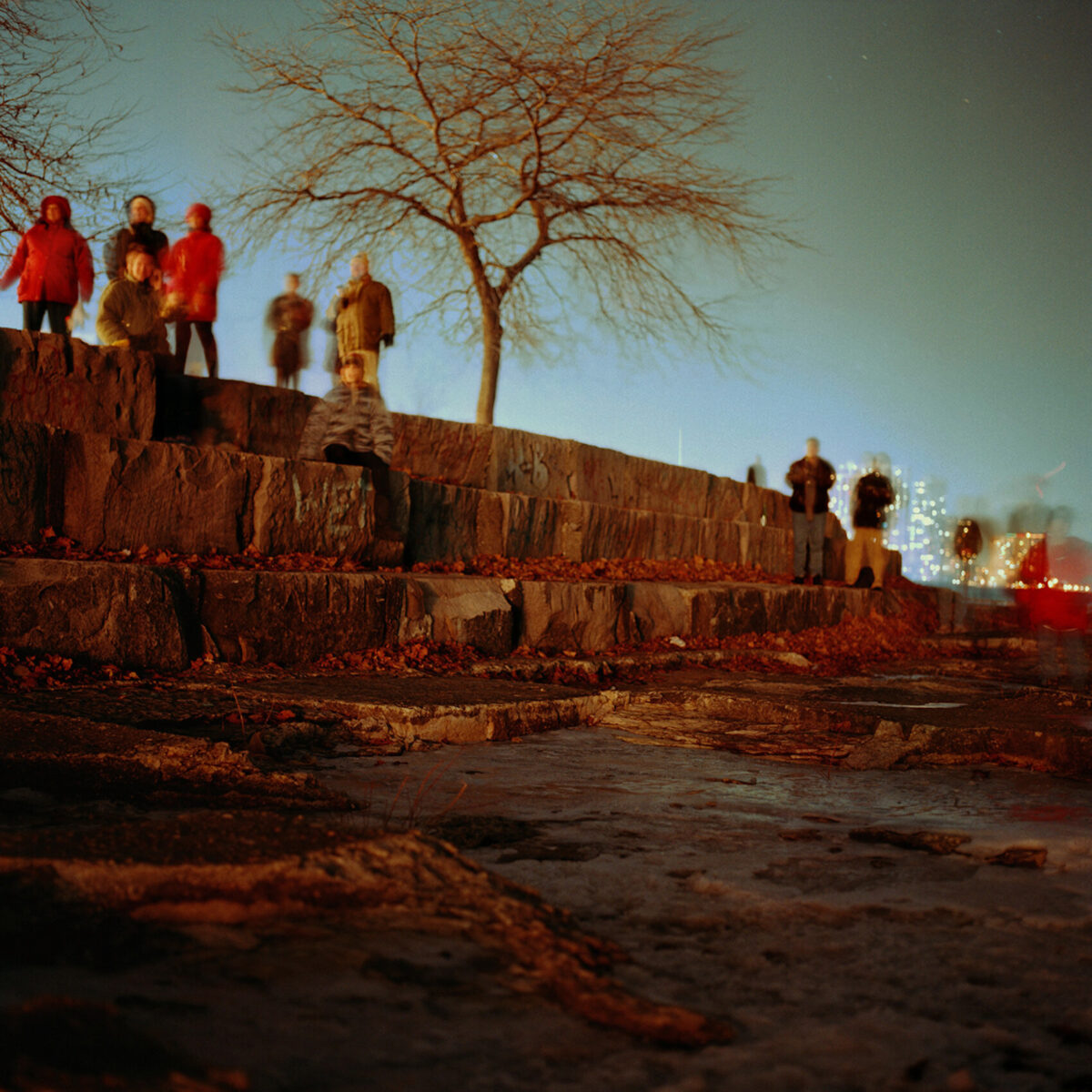
Among the first images captured, revelers gather to watch New Year's Eve fireworks from Foster Avenue Beach. © Colleen Dahlberg Plumb | CITY 2000
Gary Comer imagined an unprecedented photography project: document the city of Chicago in the year 2000.
The life-long Chicagoan funded a unique year-long undertaking called Chicago in The Year 2000 (CITY 2000) and then donated its half a million photographs, almost 500 hours of audiovisual materials and project files to the then named University of Illinois at Chicago Library. The university has since dropped the ‘at’ and is now known as the University of Illinois Chicago.
“What better way than to use images at the dawn of the digital era to preserve a memory of ourselves and of our city for our children and grandchildren, and for all the generations beyond them,” wrote Comer in his introduction to CITY 2000: Words and images about Chicago and its people (University of Illinois Press, 2006). A Chicago Tribune writer once lauded the philanthropist for launching “an outlandishly ambitious project.”
On November 6, 1999, project director Richard Cahan organized a bus tour to orient the corps of photographers. Chicago cultural historian Tim Samuelson was the onboard narrator. Comer took the mic as the bus approached South Michigan Avenue:
And so at a moment after midnight, January 1, 2000, dozens of photographers set to work—covering life in the city over the course of the millennium year, a leap year. Many lived and breathed CITY 2000 until the clock ran out on December 31, 2000. The project generated about a half million images and half a thousand hours of audio and video.
Upon the closing of the last shutter, it was a wrap on the shooting phase. In July 2001 CITY 2000 donated its material to the UIC Library “…for the purpose of educating the public and preserving a historical record of Chicago in the year 2000.”
First delivered to the Richard J. Daley Library at 801 S. Morgan, the Comer Archive of Chicago in the Year 2000 now resides in Special Collections and University Archives at the Library of the Health Sciences-Chicago at 1750 W. Polk St.
Two months after the paperwork was finalized University Library staff were “charged with moving CITY 2000 forward from its archival state to an accessible resource for students, scholars, and the public at large.” With the construction of a subzero storage space, the library noted that the materials would be preserved for 1,000 years, until the year 3,000.
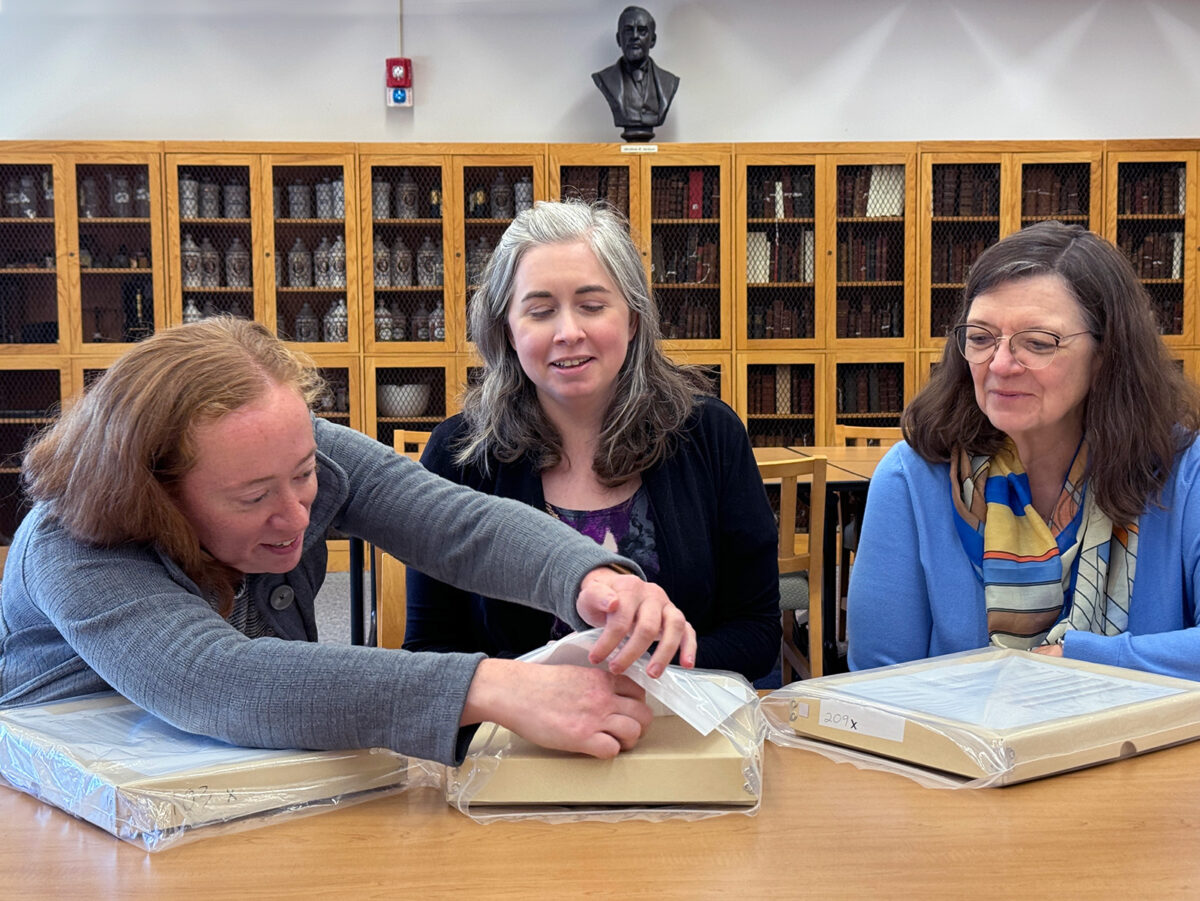
The CITY 2000 collection is housed in the University Library at the University of Illinois Chicago (UIC) under the careful stewardship of Megan Keller Young, Special Collections Librarian, Special Collections and University Archives; Kate Flynn, Digital Programs and Metadata Project Librarian, Digital Programs & Services; and Roberta Dupuis-Devlin, Digitization Manager in Digital Programs and Services.
An Accessible Resource (for 1,000 Years...)
On its 25th anniversary, the Comer Archive of Chicago in the Year 2000 vastly increases its visibility on the internet. Digital scans of the original images—all shot using non-digital cameras—are enhanced by more metadata, thus they’re more searchable online. From circa 2000 tech like JobMinder (a photographer assignment database), Imacon film scanners, Oracle and Merlin (the project's original cataloging software), Luna Imaging's Insight (a mid-2000s digital asset management system) to the digital preservation platform Libnova in 2025, more of the analogue-original archive is migrating to the library’s online portal.
Thanks to the efforts of Megan Keller Young, Special Collections Librarian; Roberta Dupuis-Devlin, Digitization Manager in Digital Programs and Services; and Kate Flynn, Digital Programs & Metadata Project Librarian and former portal manager at the Chicago Collections Consortium, the archive is more accessible than ever.
We sat down with the trio for an update on preserving and circulating Comer’s philanthropic vision.
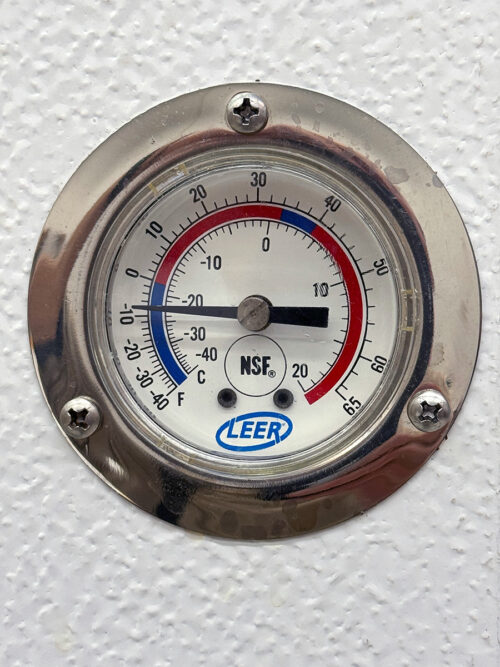
The diverse collection contains 664 boxes occupying 509 linear feet of shelf space. Photographic negatives, transparencies and contact sheets nestle in cold storage (between -10° and -20° Fahrenheit). Other contents on site include 781 tapes in miniDV, DVCAM, DAT and VHS formats; 417 CDs; two 35mm film reels; and one audio cassette. Papers and ephemera add context as well as document how the project was run.
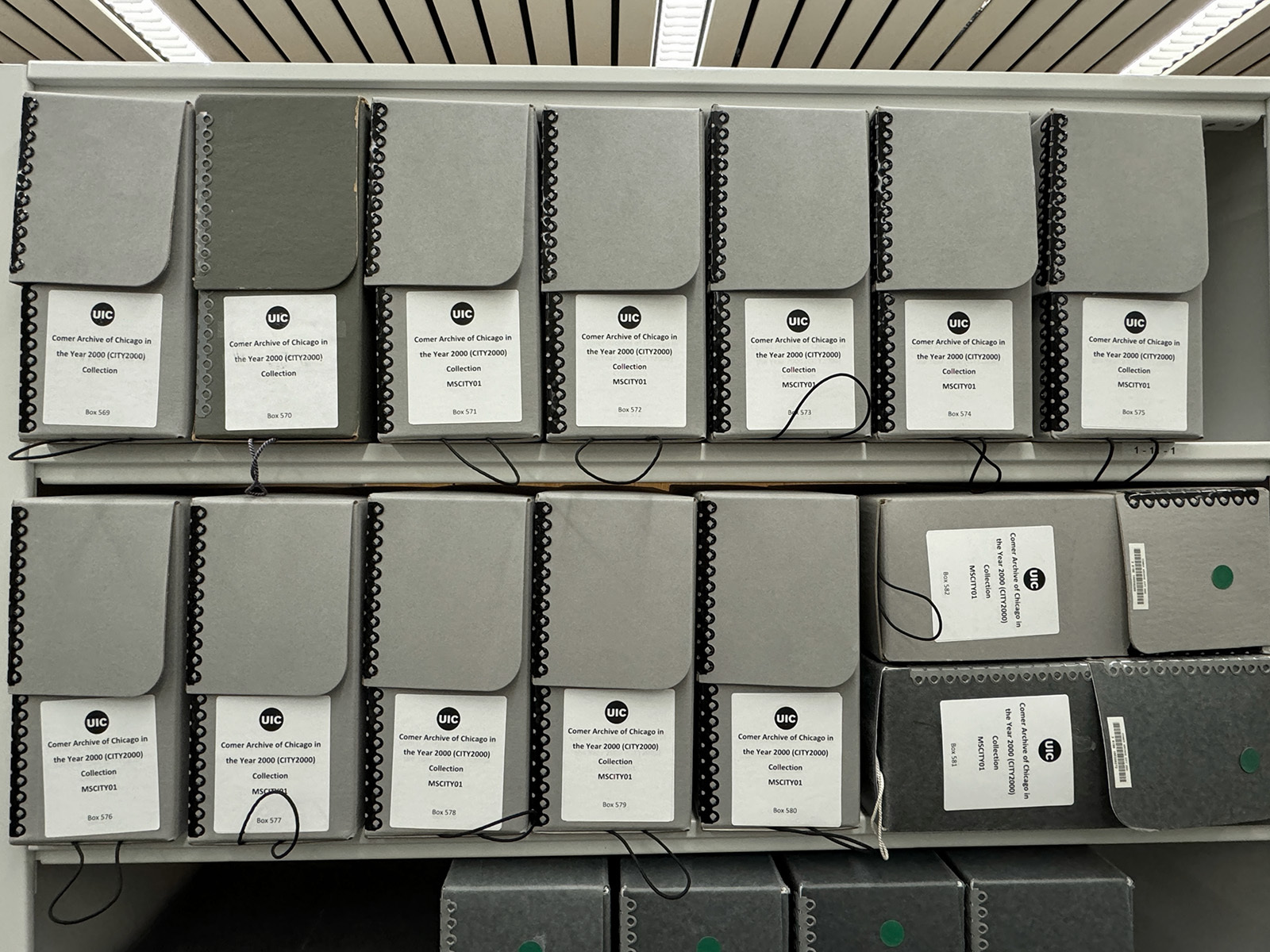
The CITY 2000 collection contains a half a million photographs. The dawn of the next millennium was timely for sampling a wide variety of analog film formats and cameras, from a vintage banquet camera, to 35mm, 120mm, 4x5 and 8x10, to sub-miniature Minox spy camera. The archive also contains 20 hours of audio and 450 hours of video. Very few images were digitally captured in that era’s format, which was less advanced than the iPhone photos you see above.
“After acquiring the collection, the library was tasked with processing the collection, building and equipping a scanning lab to digitize additional material, rehousing the material for archival preservation, and designing and building a cold storage facility,” notes Dupuis-Devlin. “After a 5-year scanning agreement with the foundation was completed, the collection was brought under the management of Special Collections.” Since then, she adds, “The library established a Digital Programs Department and migrated the collection and databases as digitization capabilities and standards have evolved.”
Keller Young describes the convergence as “bringing together everyone’s expertise: Special Collections and University Archives, Digital Programs and Services, and Resource Acquisition Management. Without these three departments working together, we would not be as successful.”
Upon her arrival in 2016, Keller Young became the “steward” of the CITY 2000 collection: “I realized there was way more material in the collection that deserved to be publicly available, and with the approval of the Head of Special Collections and University Archives, began to collaborate with other Library departments to make it happen. Receiving the Save America’s Treasures grant will enable us to add the audiovisual component of the project to make the full collection publicly accessible.”
Between 2003 and 2008 assorted metadata librarians, as they’re called, scanned 25,000 negatives annotated with key terms. “So the work we've been doing in the last year, we're really going over and doing kind of quality assurance corrections,” says Dupuis-Devlin. “I think just in the five years that they were working on digitizing this material, a lot of standards had not yet evolved for digital imaging and they have evolved now, so we’ve spent the last couple of years trying to get this material compliant with those standards.”
Kate Flynn started at UIC in 2014: “I had worked on Explore Chicago Collections, which is an online portal that all different museums, libraries, archives around the city are contributing to. So I was the person helping all of those different libraries get the stuff into the portal.”
“Resource Acquisitions and Management—that's our cataloguing department,” Flynn says. “Our metadata team works on projects, describing things. Rosalva Soto, Maria Romero-Costello, Rosalie Resendiz, Charlotte Cotter, and Mingyan Li—they're all fantastic. They know Chicago and [its] people, and they can say: ‘Oh, yes, that’s so and so, or that's this place.'"
A Vast Scope
Turning to the CITY 2000 collection, she adds: “It was hard to get a sense of scope of the sort of digital content. I mean, with the physical, you can stand in a room, see all the boxes in front of you, but with digital—how many files do you have? How do they relate to each other? What's the metadata? That was harder before and we've got this digital asset management system that lets us see that much easier now.” That system now in place is Libnova.
There is a potential role of Artificial Intelligence for generating more metadata and enhancing photo searches, Dupuis-Devlin explains. “I think that we're on the cusp of some online software. There's already work being done with image recognition software. You upload a photo of our Chancellor, and it will then go through and find every similar image in the collection.”
The 2001 Deed of Gift stipulated: “UIC will also take appropriate measures to publicize the existence of and location of the archive within the library to the public, including, without limitation, adding the archive to library maps and educating library personnel to be able to direct patrons to the archive and to library employees who can answer questions about the archive.”
Comer underwrote—without ever penciling in a budget ceiling—an enterprise of enthused documentarians.
Comer hired Richard Cahan, the Chicago Sun-Times picture editor, to run CITY 2000, based in a loft at 312 N. May Street. Before the archive handoff to UIC Library, the CITY2000 team digitized and uploaded about 10,000 selected images using two state-of-the-art Imacon film scanners and catalogued in Merlin software.
Non-digital images in the collection saw the light of day offline. The staff also printed 1,200 color and black-and-white photographs displayed at over 15 sites throughout city. Afterwards many prints ended up on the walls of the UIC library.
A selection of framed prints went abroad, starting in Paris in June and July of 2001. On September 11, 135 CITY 2000 photographs reached Aleppo, Syria. In the immediate aftermath of the 9/11 terror attack on the United States, Valentine Judge, Director of Marketing at the Chicago Department of Cultural Affairs, told Syrians at the exhibition: “This is what America looks like.” The U.S. State Department circulated a CITY 2000 Traveling Exhibition of 150 framed prints further to Alexandria, Amsterdam, Amman, Casablanca, Columbo, Delhi, Durban, Frankfurt, Hamburg, Sao Paulo, Curitiba, and Tunis. In 2006, a CITY 2000 exhibit was held in Chicago’s sister city Galway.
The University of Illinois Press published in 2006 two photo books of CITY 2000 photographs: 3,500 copies of a hardcover edited by Teri Boyd had 269 pages with 199 photographs; a limited deluxe edition of 200 numbered copies was donated to libraries here and around the world. The library database WorldCat.org lists 190 libraries that have copies, in one edition or the other, on their shelves.
The archive’s 70 terabytes backed up on servers around the world will soon be joined by even more content. The Save America’s Treasures grant program, funded by the National Park Service, recently granted $122,917 to the UIC Library to “digitize, preserve, and make accessible 781 audio and video recordings… enhanced with metadata as well as audio transcripts. The Institute of Museum and Library Services envisions a nation where individuals and communities have access to museums and libraries to learn from and be inspired by the trusted information, ideas, and stories they contain about our diverse natural and cultural heritage.”
“We will be creating metadata and transcripts for the recordings and expect to fully complete the project in June 2026,” wrote Megan Keller Young in an email. Roberta Dupuis-Devlin elaborated: “After we've completed the deposit of the still images and A/V (audio and video recordings) we'll address ways to crowd source additional descriptive information supplied by the project alumni and the public in general.”
On the occasion of the very first exhibition of photographs in Chicago—all shot, printed and framed in the very first week of the project—Chicago Sun-Times columnist philosophized:
Celebrating 25 Years
In celebration of CITY 2000’s 25th anniversary, the University of Illinois Chicago Library’s Special Collections and University Archives Department created a digital exhibit. As the city continues to grow and change, the CITY 2000 project will remain a cultural record of, as Comer later wrote, “what we were; of how we worked, how we lived and how we played.”
CITY 2000 photographers recorded historic, exciting, and mundane moments that revealed the heart of Chicagoans experiencing the fresh beginning of a new millennium. These images highlight the lives of Chicagoans and preserve their enduring joy and pride for their city.
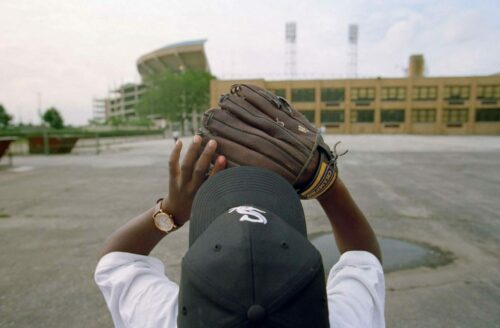
Pierre Williams, a little league player, practices catching a pop-up. Wentworth Gardens (Chicago, Ill.), June 16, 2000. © Wes Pope | CITY 2000
Accessing the collection
The digital archive in UIC Digital Collections contains between over 44,000 single and multipart objects that are comprised of over a million files. The UIC Library made contact scans of all the film entering the collection. High-resolution scans were made of selections from most, not all, of the 2,805 projects assigned and shot in the year 2000. The archive also contains scans made by CITY 2000 staff that year. The audio and video tapes generated then are now undergoing digital reformatting with the support of a Save America’s Treasures National Park Service grant. UIC Library expects these non-photographic assets will begin appearing in the digital collection in the third quarter of 2025. The projected completion date is September 2026.
CITY 2000 Contributor Access
CITY 2000 alums may take advantage of the library's new digital collections platform for a dynamic way of searching and viewing digital materials.
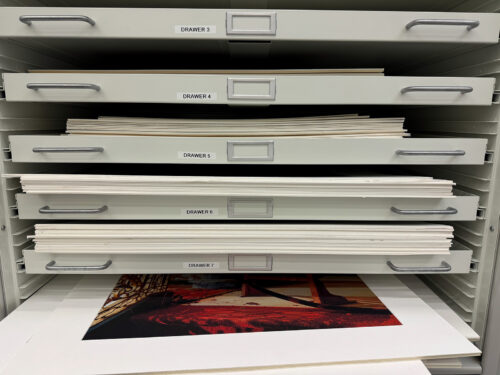
A print of the Uptown Theatre by Suzy Poling peeks out from the archive's flat files. A number of photographic and digital prints live in the archive. Each week, CITY2000 staff printed, matted and framed and installed a new show in the City Gallery in Chicago's Historic Water Tower. The project culminated in a show at the Chicago Cultural Center and the Chicago Department of Cultural Affairs helped organize a global traveling exhibition.
Librarians make unique discoveries as they work on the archive.
—Gary Comer
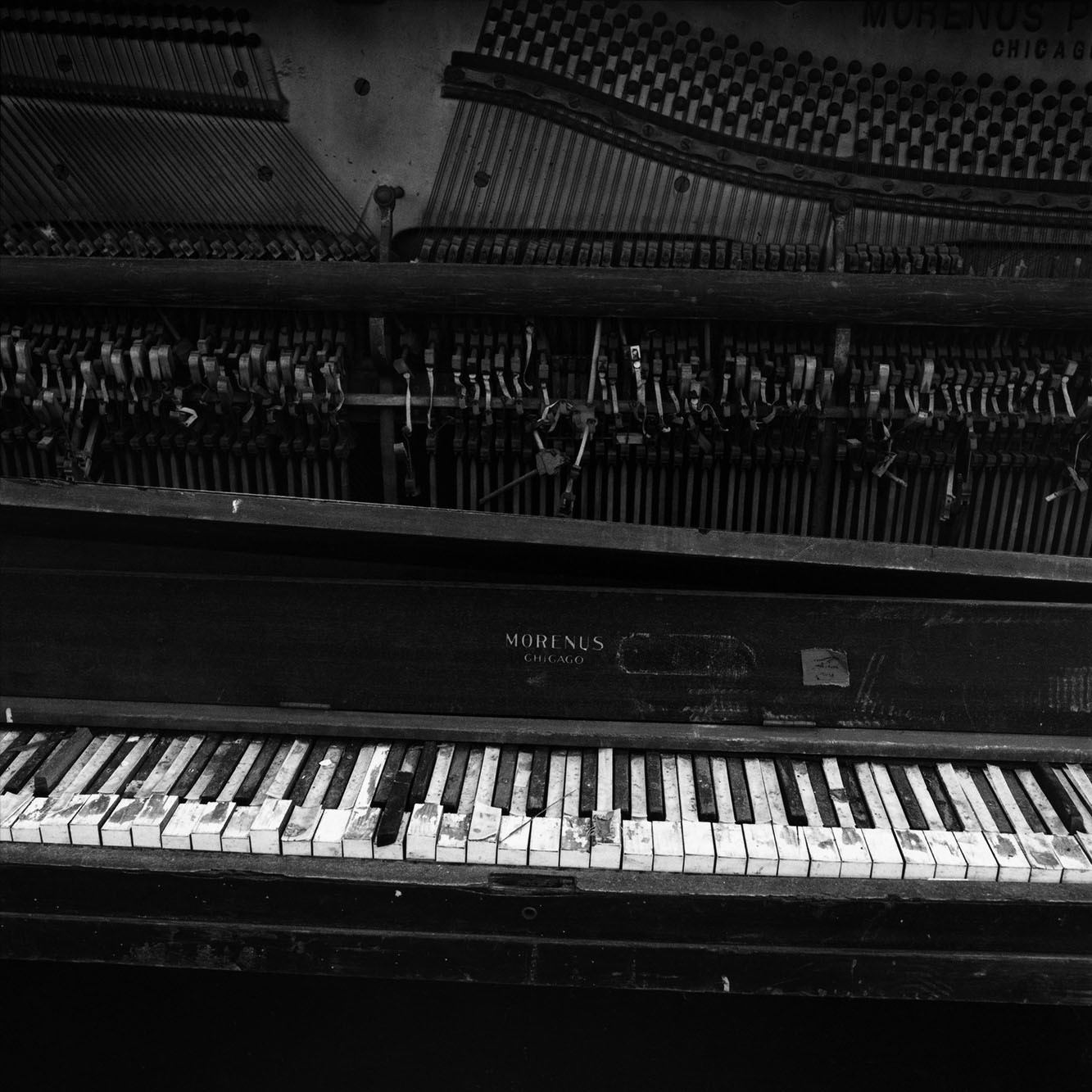
Photo © Ron Gordon | CITY 2000
Maxwell Street Market’s most unwavering truism was that all things were for sale, including salvation-in-scripture, old jazz and blues LPs, costume jewelry, hand-crafted artwork, white socks (in packages of twelve), hubcaps, pornography, Polish sausages -- and eventually, even the land upon which the market was situated. The final Maxwell Street lessons: all posted prices are negotiable, and all sales are final. In 2000, a public-private partnership began to develop the area into condominiums, townhouses, shops, and expanded student housing for the University of Illinois Chicago. CITY 2000 caption by Jessica Royer Ocken
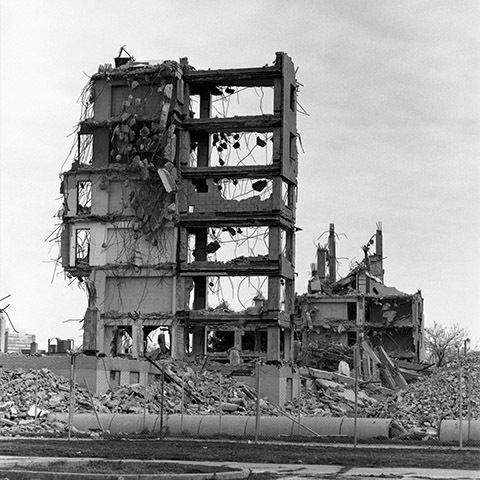
Photo © Ron Gordon | CITY 2000
A skeleton of a building at the Chicago Housing Authority’s Robert Taylor Homes, 44th and State Streets, marks the skyline in the shadows of downtown. CITY 2000 caption by Jessica Royer Ocken
—Roberta Dupuis-Devlin
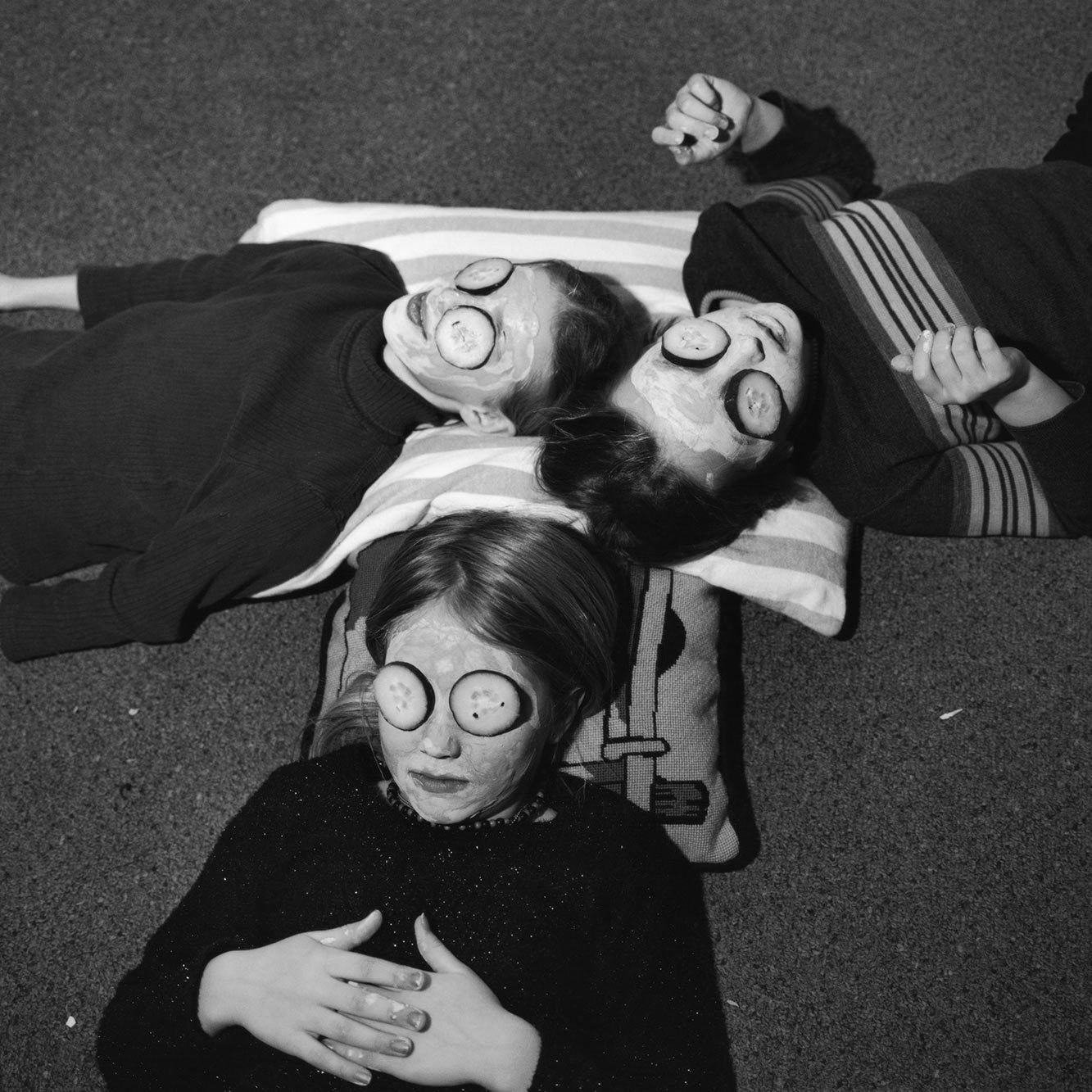
Photo © Michelle Litvin | CITY 2000
Iris, Julia and Annie top off their treatments—and their slumber party celebration of Iris’ 9th birthday — by relaxing their young eyes underneath cucumber slices. CITY 2000 caption by Jessica Royer Ocken
—Megan Keller Young
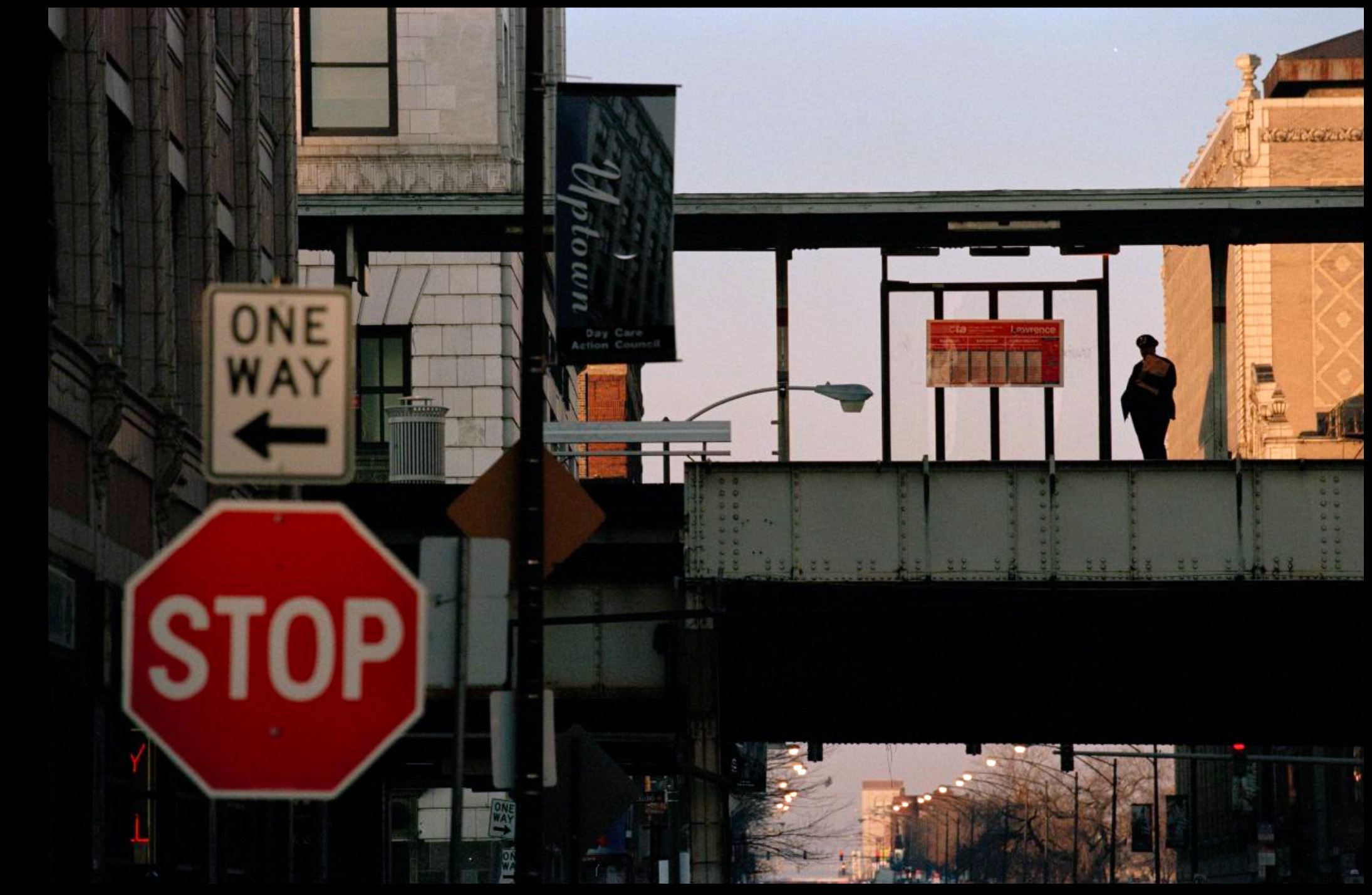
Photo © Vasna Wilson | CITY 2000 New Year's Day on Argyle Street.
—Kate Flynn



